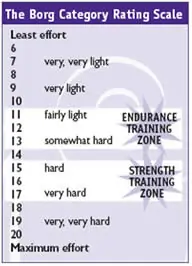The past quarter century has seen the rise of "scientific" training, led by the introduction of heart rate monitors and now power monitors. How do these modern tools stack up against the traditional subjective ratings of perceived exertion, and does there remain value in understanding and appreciating perceptual responses to exercise?
The History of Training Monitoring
The legendary cyclist Francesco Moser, along with his trainer Francesco Conconi, revolutionized the entire field of sports training in the early 1980s. While aerodynamic improvements certainly helped substantially, the systematic training was what really ignited the field of sport science since that 1984 record. With their detailed and scientific approach to preparing Moser for shattering the hour record, they redefined training from a somewhat random ride at various intensities to systematic efforts using heart rate as a defining parameter.
The rest is pretty much history in the public domain. From Moser's clunky model, heart rate monitors (HRM) were popularized by Polar, which now dominates the market. During my move last summer, I came across my first generation Polar HRM from about 1988, featuring a wired cable from the chest band to a wrist unit that makes even the largest techno-watch today seem svelte and sleek in comparison!
Concurrently in the mid-1990s, two other lab-based instruments made the initial jump to portable accessibility for the masses. We all know about the SRM and the PowerTap for power monitoring. The other testing tool is the hand-held lactate measuring units such as the AccuSport and the Lactate Pro, which require only a finger-prick blood sample and can deliver results within 60 seconds of measurement.
This has come to replace expensive and after-the-fact lab-based lactate measurement techniques, and swimming is especially notable as a sport that has used lactate monitoring extensively.
But how do you Feel?
All of these tools are fantastic, and it's almost inconceivable for many of us to go for any "decent" ride without at least a bike computer and HRM on the bike. Yet it is also important to remember that one of the fundamental uses of all monitoring devices is to help you learn how to "feel" and gauge your efforts better.
That is, one important goal is to provide objective quantification of your effort and then match or correlate that to your perceptual sensations of effort. That's why many experienced endurance athletes can gauge their interval intensity or even their breakaway efforts mainly by feel rather than blindly keeping pegged to a certain number.
So of course, as with any tool used for research, the question becomes: "How do we quantify our perceptual sensation of effort, and how accurate and reliable is this measure?"
Borg's Ratings of Perceived Effort
For perceived effort, the gold standard is Dr. Gunnar Borg's classic "Ratings of Perceived Exertion" or RPE scale, first introduced in the 1970s and formally published in 1982 (1). The classic Borg scale rates your perceived effort on a scale from 6 to 20, with 6 being "no exertion at all," to 13 being "somewhat hard," 17 being "very hard," through to 20 being "maximal exertion."

When using the scale, it is important to remember that "This feeling should reflect how heavy and strenuous the exercise feels to you, combining all sensations and feelings of physical stress, effort, and fatigue. Do not concern yourself with any one factor such as leg pain or shortness of breath, but try to focus on your total feeling of exertion." (Quote taken from Center for Disease Control website). So it is not just focusing on sore legs or localized effort, but your overall sensation of how hard the workload is.
Another important consideration is that this is not meant to be compared across individuals. It is not a contest to "tough it out" and rate a hard effort as easy. Garbage in, garbage out! The focus is on comparing your honest responses to workloads over time, just like tracking long-term changes to your training or fitness from your training diary.


